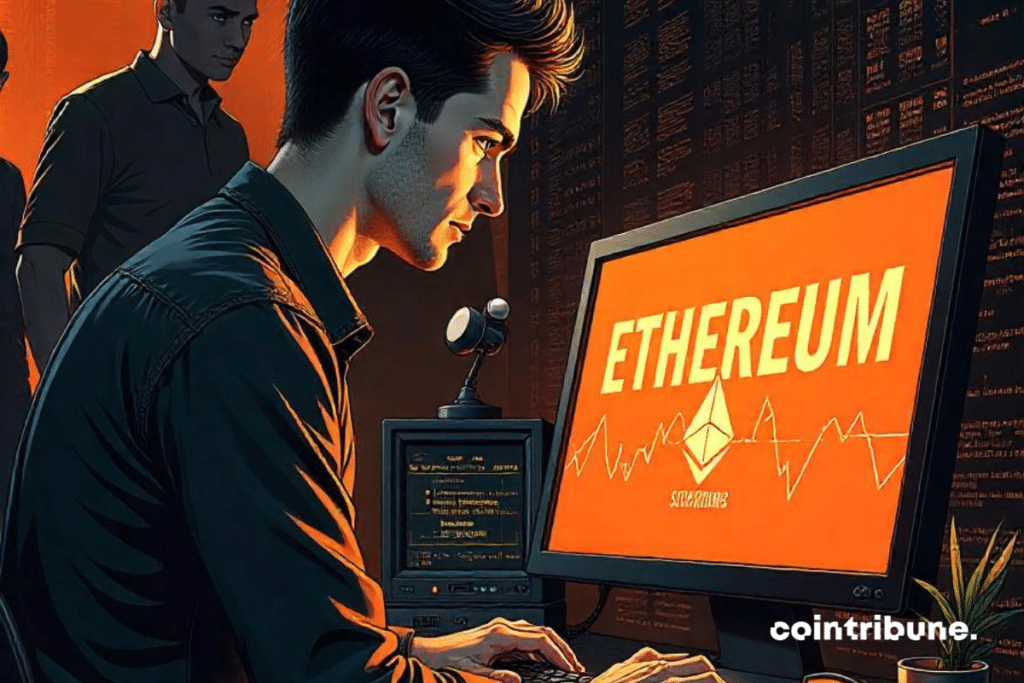14:05 ▪
4
Minimum read time up to ▪
Ethereum co-founder Vitalik Buterin continues to reflect on the network's evolution in a new in-depth blog post. He addresses challenges of centralization, value extraction, and transaction fees, and proposes ambitious solutions to sustain the cryptocurrency ecosystem.


A global approach to Ethereum challenges
Since early October, Vitalik Buterin has published a number of publications on X detailing the Ethereum network's key issues and considered solutions. Today, he delved into the economic issues related to centralization of block construction and staking in an article published on his personal blog titled “Future Potential for the Ethereum Protocol, Part 3: Disaster.”
These reflections are part of the broader context of network optimization. In fact, on October 11, Buterin already tackled the thorny issue of layer 1 and 2 transaction fees. This problem becomes even more pressing as transaction fees are not decreasing despite the various scaling solutions already implemented.
In parallel, this comprehensive vision will be complemented by the announcement of the next Pectra fork, scheduled for late 2024 or early 2025. This major update aims to optimize transaction fees for Layer 2 (L2) scaling solutions, an important issue for Ethereum's scalability and competitiveness.
In this new article, Buterin identifies two major challenges: centralization of block construction and economic issues related to staking. He particularly highlights the risks associated with the current MEVBoost system, which can concentrate power in the hands of a few specialized actors. Economically, we are concerned about the outcome of a scenario in which almost all ETH is at stake.
These considerations are consistent with his recent proposal to balance fees between Layer 1 and Layer 2 of the network. Buterin aims to create a consistent ecosystem that can handle increasing traffic without compromising accessibility or decentralization.
innovative technology solutions
In the face of these challenges, Vitalik Buterin outlines some ambitious technological measures. For block construction, we propose a hybrid approach that combines a forced inclusion list (FOCIL) with an auction system. Regarding the economics of staking, we envision capping rewards or establishing a two-tier system.
These proposals follow EIP-7762, which he mentioned in an earlier article, and aim to make “blob” fees more predictable. Buterin also emphasized the importance of capturing Maximum Extractable Value (MEV) returns at the protocol level, an issue that is closely related to block construction.
In parallel, Ethereum's co-founders are encouraging the development of application-level solutions such as squad staking and decentralized block construction markets. These approaches complement the “paid rollups” mentioned above.
In summary, Vitalik Buterin's proposal, combined with the Pectra fork, represents a holistic approach to the evolving Ethereum. By simultaneously addressing the economics of fees, centralization, and staking, the co-founders propose an ambitious roadmap to tackle the challenges of large-scale network deployment. The challenge now is to turn these reflections into concrete solutions and implement them effectively to sustain the Ethereum ecosystem and strengthen its position in the cryptocurrency industry.
Get the most out of your Cointribune experience with the Read to Earn program! Earn points every time you read an article and get access to exclusive benefits. Sign up now and get rewards.
Passionate about Bitcoin, explorer of blockchain and cryptography, and a challenger at the forefront of communication. We guarantee you a free life and financial freedom, and we guarantee you a safe life so you can use your Bitcoin safely.
Disclaimer
The views, ideas and opinions expressed in this article are solely those of the author and should not be construed as investment advice. Please do your own research before making any investment decisions.

